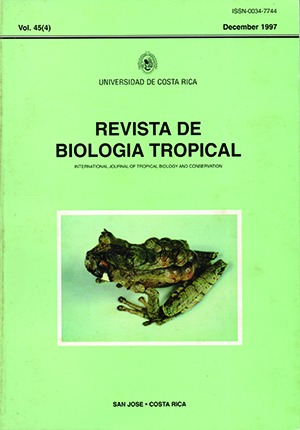Abstract
The present vegetation of a 1100x2000m saline pasture in Oriente, Cuba, has been formed mostly under human inflúence. There are few native grasses surviving in the area and most of these are halotolerant species that live on marginal areas where the introduced fodder species cannot tolerate the high salinity. Authors found a c10se correlation between the electrical conductivity of the soil saturation extract and the plant composition of 252 sampling quadrats. Among the commonest grass species, the order of halotolerance from the least to the most halotolerant species was Bothriochloa pertusa, Dicanthium caricosum, C. plectostachyon and C. nlemfuensis. Cynodon dactylon and Sporobolus pyramidatus. ' As a result of the limited number of plant species occurring, the strong abiotic stress caused by salinity, and the occasional waterlogging, the vegetation predicts the,soil salinity status with acceptable precision. 80th in discriminant analysis and through the Use of arbitrary vegetation categories, the salinity category «4, 4-8' or >8 mS/cm) of the soil was predicted with a precision of abaut 75%. The lowest salinity category «4 mS/cm) coincided with the dominance of Bothriochloa pertusa, Dicanthium caricosum. Cynodon nlemfuensis and C. plectostachyon. The high cover of halotolerant species such as Sporobolus pyramidatus. Sesuvium portulacastrum and other halophytes coincided mostly with the highest salinity category (>8' mS/cm). Because of the ease of distinguishing the vegetation categories and the straightforwardness' of the technique, which does not require any specific statistical preconditions, authors suggest tite use of the occurrence of halotolerant plant species to judge the salinity status of tlte pasture.Comments

This work is licensed under a Creative Commons Attribution 4.0 International License.
Copyright (c) 1997 Revista de Biología Tropical
Downloads
Download data is not yet available.


